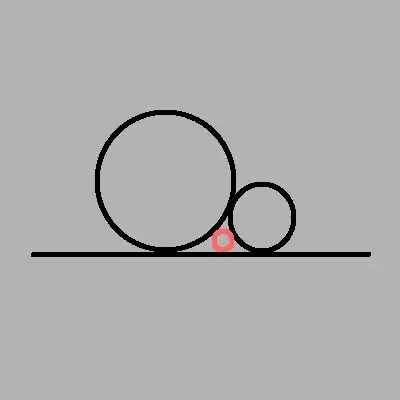Your setup is a special case of Descartes' theorem. In general that theorem describes the radii of four circles which all touch one another, but in your special case one of these circles is a line. Since the key ingredient to the relation are inverse radii, this means that the corresponding term will simply be zero.
Long story short: if $r_1$ and $r_2$ are the radii of the given circles, then the small circle has radius
$$r_3 = \frac{1}{\dfrac1{r_1}+\dfrac1{r_2}+\dfrac2{\sqrt{r_1r_2}}}$$
The only idea for a proof which comes to my mind just now would involve Lie geometry, which might be a bit beyond the scope of this question. But perhaps referring to Descartes' theorem is proof enough here?
